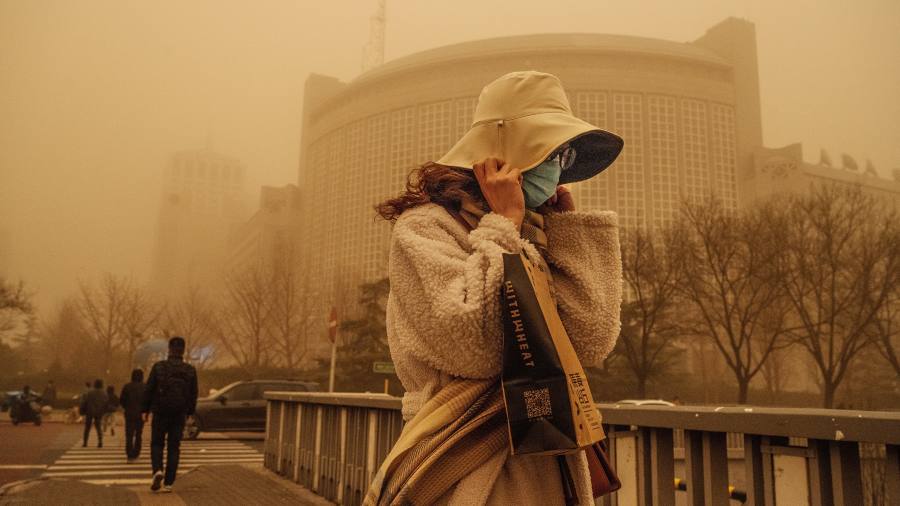[ad_1]

When Xi Jinping gathered top Communist party officials in Beijing earlier this week to warn that peaking carbon dioxide emissions by 2030 would be a “great examination†for the leadership, the Chinese president’s message was punctuated by an orange cloud that darkened the city’s skies.
China’s worst dust storm in a decade led to record readings of harmful fine particulate matter at the city’s air quality monitoring stations. In Mongolia, the storm left six people dead and dozens missing.
The dust storm also underscored warnings from environmentalists that global improvements to air quality from coronavirus-induced lockdowns may prove to be a fleeting respite from worsening greenhouse gas emissions if major economies fail to prioritise sustainability in stimulus packages.
Extreme weather events played an outsized role in global air pollution last year, even as lockdowns meant that concentrations of PM2.5, the microscopic particulate matter that worsens respiratory diseases, fell in 65 per cent of cities monitored by IQAir, a Swiss air pollution tracking company.

Record wildfires in the US, Australia, Siberia, and South America caused some of the only worsening air quality to be recorded globally by IQAir in São Paulo, Los Angeles and Melbourne.
The same trend was apparent in China, where desert oasis cities such as Hotan and Kashgar in the northwestern Tarim Basin suffered the worst air quality as dust interacted with rising fossil fuel emissions to create extreme pollution episodes.


In recent decades, seasonal storms that sweep dirt down from the Gobi desert to Beijing have become less frequent, in part because of a vast government campaign to plant a “green Great Wall†of trees across northern China.
But the geography of the Mongolian plateau makes the region especially vulnerable to the effects of climate change. Temperatures in Mongolia rose by 2.24 degrees from 1940 to 2015 — triple the global average.Â
Du Shiwei, a researcher at the state-run Chinese Academy of Social Sciences, told state broadcaster CCTV this week that “Mongolia will have the earliest ecological reaction to extreme weather†because of its high altitude and sparse vegetation.
Avoiding the worst effects of climate change in Mongolia will in large part be determined by decisions in China, the world’s largest emitter.
Despite Xi’s pledge last year to reach net-zero carbon emissions by 2060, China’s five-year economic blueprint released this month disappointed those who had hoped for strict curbs on polluting coal power plants.
Even before the dust storm, Beijing was mired in a relapse of poor air quality at levels similar to 2016, caused by soaring production of steel, cement and aluminium.
Follow @ftclimate on Instagram
Climate Capital

Where climate change meets business, markets and politics. Explore the FT’s coverage hereÂ
[ad_2]
Source link





